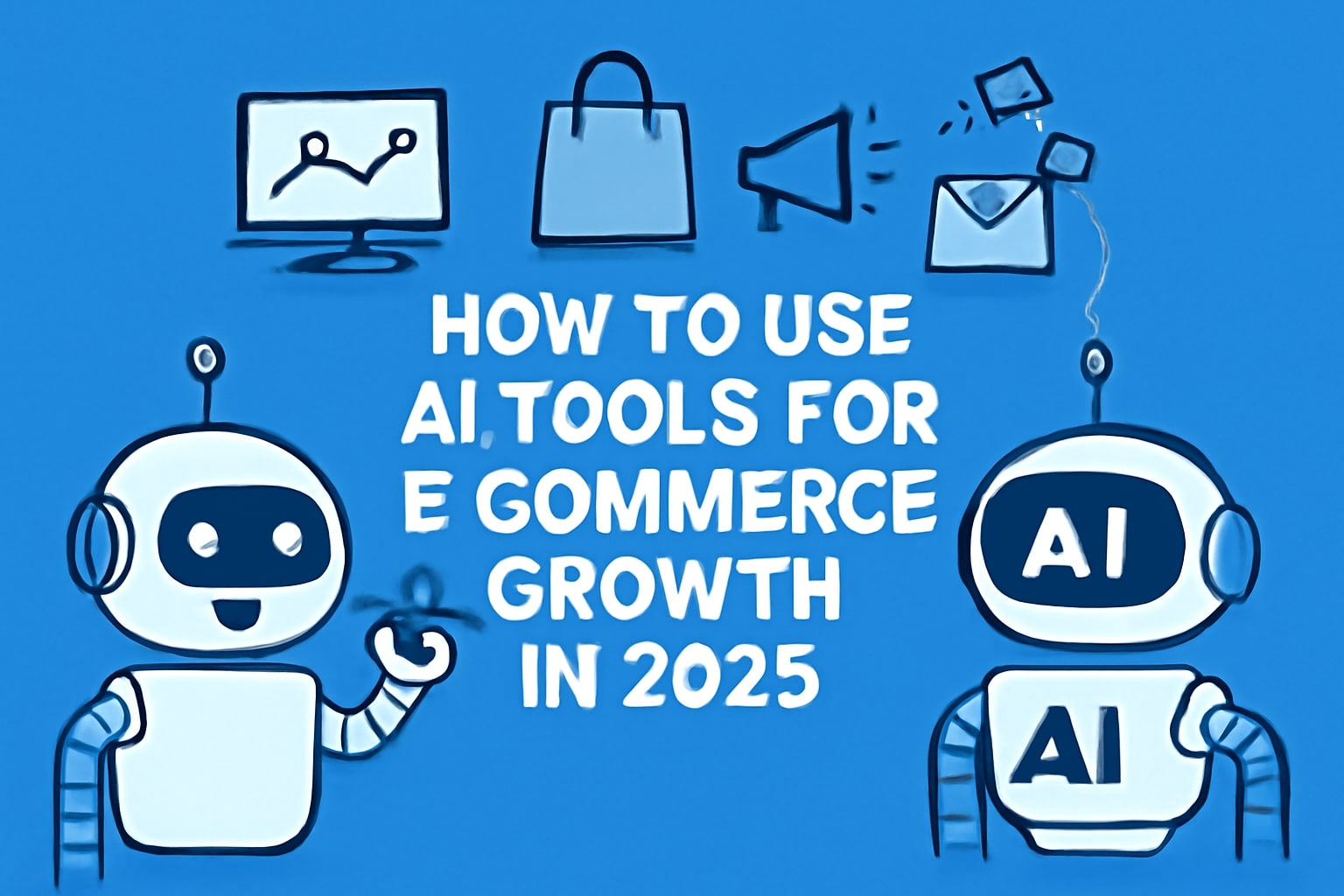The e-commerce landscape in 2025 is fiercely competitive. To succeed, stores must personalize experiences, optimize operations, and market smarter—not harder. AI tools for e-commerce growth are the secret weapon. This guide shows you how to use them to boost sales, reduce costs, and scale your online store effectively.
1. Personalize the Shopping Experience
The Goal: Make every customer feel like the store was built just for them.
AI Tools & How to Use Them:
- Product Recommendation Engines: Tools like Nosto or Shopify Plus use AI to analyze browsing and purchase history. As a result, they display “You might also like” items that increase order value.
- Dynamic Email Content: Platforms such as Klaviyo personalize emails with products each subscriber is most likely to buy. This makes campaigns more relevant and profitable.
2. Optimize Product Listings & SEO
The Goal: Get found by more people searching for what you sell.
AI Tools & How to Use Them:
- AI Copywriting: Use Jasper or Copy.ai to generate SEO-friendly product descriptions, meta titles, and bullet points at scale. This works especially well for large catalogs.
- SEO Optimization: Tools like Frase analyze top-ranking pages for your target keywords. Consequently, you can create content that is both comprehensive and competitive.
3. Enhance Visuals with AI
The Goal: Create stunning product imagery without a professional studio.
AI Tools & How to Use Them:
- Background Removal: Tools like Photoshop’s Generative Fill or Remove.bg clean up product photos instantly.
- Virtual Photos: When photoshoots are too expensive, Vue.ai generates lifestyle images of products on models in different colors.
4. Implement AI-Powered Customer Service
The Goal: Answer questions and solve problems instantly, 24/7.
AI Tools & How to Use Them:
- AI Chatbots: Use platforms like Tidio or Zendesk to handle common pre-purchase questions and post-purchase tracking requests. This frees human agents for complex issues.
5. Run Smarter Ad Campaigns
The Goal: Maximize return on ad spend (ROAS).
AI Tools & How to Use Them:
- Platform AI: Leverage the AI within Meta Ads Manager and Google Ads. Their Advantage+ and Performance Max campaigns automatically find the best audiences and placements, which improves performance.
6. Forecast Demand & Manage Inventory
The Goal: Avoid stockouts and overstocking.
AI Tools & How to Use Them:
- Inventory Management Software: Platforms like Veeqo or Shopify use AI to predict demand by analyzing sales trends, seasonality, and promotions. As a result, stores can maintain optimal stock levels.
Getting Started with E-commerce AI
Start with one area that has the biggest immediate impact. For example:
- If abandoned carts are a problem, set up AI-powered email sequences.
- If product discovery is weak, implement a recommendation engine.
- If you’re drowning in customer questions, deploy a chatbot.
The beauty of AI tools for e-commerce growth is that they let smaller stores deliver the kind of personalized and efficient experiences once reserved for giants like Amazon. By starting small and scaling smart, you can fuel sustainable growth in 2025 and beyond.
Discover the best AI tools for e-commerce growth in 2025. Learn how to personalize shopping, optimize SEO, run smarter ads, and boost sales with AI-powered strategies.
